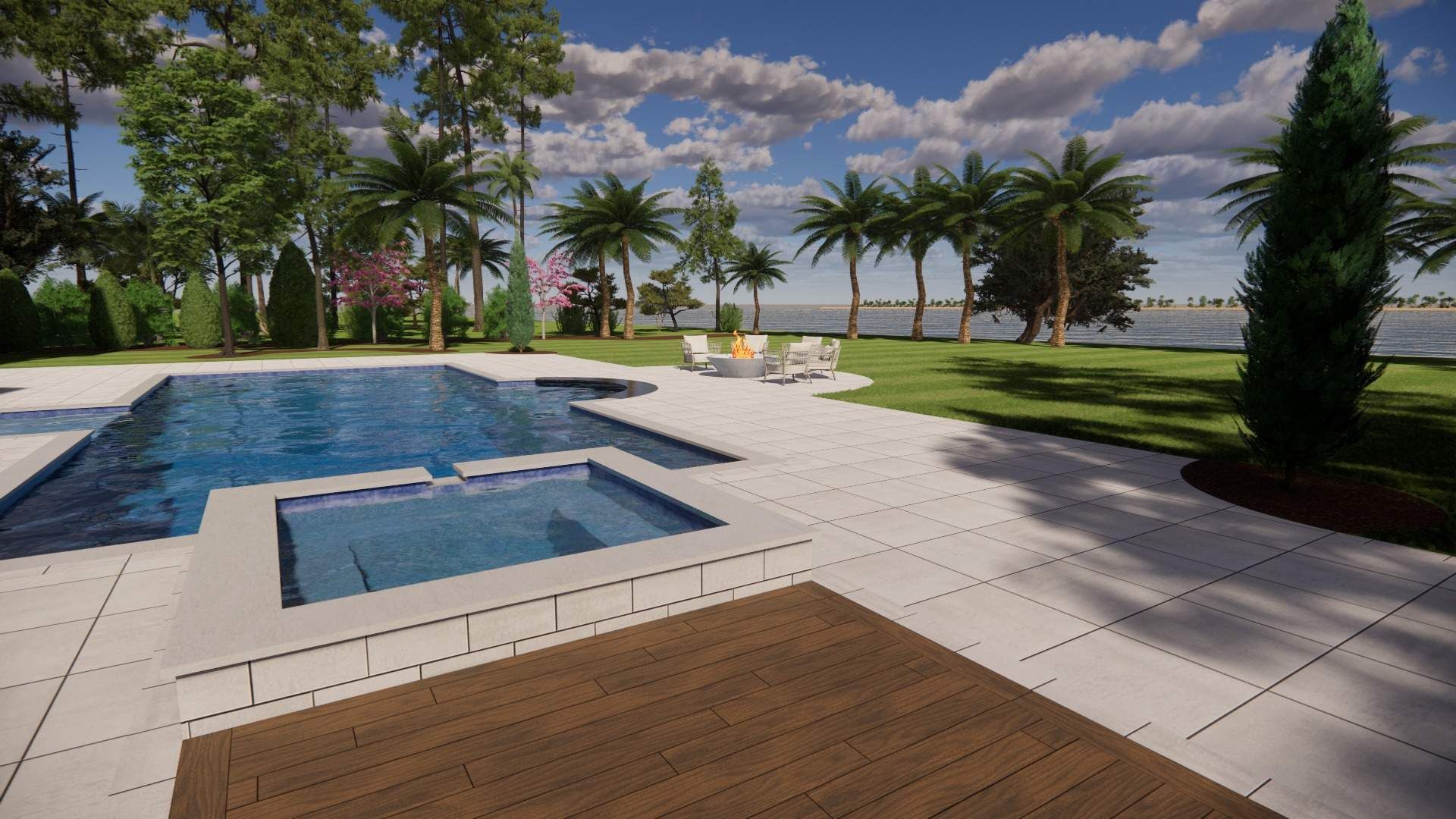Smart Irrigation Techniques for Water Conservation: Effective & Sustaibale Solution

Smart Irrigation Techniques for Water Conservation: Unlocking Effective Solutions for a Sustainable Future
Water is a precious resource. Smart irrigation techniques help you save it while keeping your landscape healthy and green. These methods use technology to deliver the right amount of water to your plants when they need it. This guide will show you how these techniques work and their benefits, especially here in Hilton Head Island, South Carolina.
Key Takeaways
- Smart irrigation uses technology to save water.
- These techniques help plants grow strong and healthy.
- Different systems, like drip irrigation and smart controllers, can fit various needs.
- Implementing these methods can lower your water bill and benefit the environment.
Explore Sustainable Landscaping Solutions to enhance your outdoor space further.
Understanding Smart Irrigation
Smart irrigation is all about using the right tools for watering. Instead of just turning on a hose or sprinkler, smart systems take into account the weather, soil moisture, and plant needs. These tools help save water and time.
Why Smart Irrigation Matters
In a place like Hilton Head Island, where the sun shines bright, water can evaporate quickly. Using smart irrigation helps you keep your yard healthy while using less water. It is a win for your garden and the environment.
System Type Water Savings Best For Technology Used
- Drip Irrigation Up to 70% Flower beds, Veggie gardens Tubes, Emitters
- Smart Sprinkler Controllers Up to 50% Large lawns and gardens Weather data integration
- Soil Moisture Sensors Up to 60% All garden types Moisture detection
- Rain Sensors Up to 30% All garden types Rainfall detection
Types of Smart Irrigation Systems
There are different types of smart irrigation systems. Each system has its way of saving water and keeping your plants happy.
1. Drip Irrigation
Drip irrigation is a great choice for gardens. This system delivers water directly to the roots of plants. It uses small tubes and emitters to give just enough water.
- Benefits:
- Reduces water waste.
- Keeps soil moist without soaking.
- Great for flower beds and vegetable gardens.
2. Smart Sprinkler Controllers
These controllers adjust the watering schedule based on weather conditions. They can connect to weather forecasts to know when to water.
Benefits:
- Water only when needed.
- Saves time and energy.
- Can be controlled from your phone.
3. Soil Moisture Sensors
Soil moisture sensors measure how wet or dry the ground is. If the soil is wet, the system will not water.
Benefits:
- Prevents overwatering.
- Keeps roots healthy.
- Saves money on water bills.
4. Rain Sensors
Rain sensors detect when it rains. If it’s raining, the system won’t water your plants.
Benefits:
- Stops wasteful watering.
- Ensures your plants get natural water.
Additional Smart Irrigation Features
- Automated Scheduling: Allows for watering at optimal times to reduce evaporation.
- Remote Access: Control your irrigation system from anywhere via smartphone apps.
- Drought Alerts: Notifications when water restrictions are in place or when drought conditions arise.
Benefits of Smart Irrigation Techniques
Using smart irrigation has many advantages. Let’s explore them.
Water Conservation
The main reason to use smart irrigation is to save water. These systems help cut down on waste. When you save water, you do your part to protect the environment.
Healthy Plants
Smart irrigation keeps plants healthy. When plants receive the right amount of water, they grow strong and vibrant. This means a lovely yard that you can enjoy.
Lower Costs
Using less water can mean lower water bills. You save money while still keeping your garden beautiful. This can be especially helpful during hot summer months in Hilton Head.
Time-Saving
With smart irrigation, you spend less time watering. Instead of dragging hoses around, you can set it and forget it. This gives you more time to enjoy your outdoor space.
How to Choose the Right System
Choosing the right smart irrigation system depends on your needs. Here are some factors to consider.
Size of Your Yard
The size of your yard matters. Smaller yards may benefit from drip irrigation. Larger yards may need a combination of smart sprinklers and sensors.
Types of Plants
Think about the plants you have. Some plants need more water than others. A smart system can help meet the needs of different plants in your yard.
Budget
Set a budget before you start. Smart irrigation systems can range in price. There are options for every budget. Look for systems that offer the features you need without breaking the bank.
Setting Up Smart Irrigation
Once you choose a system, it’s time to set it up. Here are some steps to help you get started.
Plan Your Layout
Before installing, plan where the pipes and sensors will go. Think about where your plants are and how much water they need.
Install the System
Follow the instructions that come with your system. If you’re unsure, it’s okay to call a professional. They can ensure everything is set up correctly.
Program the Controller
If you have a smart controller, set it up for your needs. Enter the type of plants you have, the size of your yard, and local weather patterns.
Test the System
After setup, run tests on your system. Check for leaks or problems. Make adjustments as needed to ensure everything is working well.
Maintenance of Smart Irrigation Systems
To keep your smart irrigation system running well, regular maintenance is key. Follow these tips.
Check for Blockages
Regularly check tubes and emitters for blockages. Dirt can build up and stop water from flowing. Clean them as needed.
Inspect Sensors
Make sure sensors are working. If they aren’t detecting moisture correctly, adjust or replace them.
Update Programs
As seasons change, update your controller programs. Plants may need more water in the hot summer and less in cooler months.
Common Mistakes to Avoid
Even with the best intentions, mistakes can happen. Here are some common mistakes to watch out for.
Overwatering
It can be easy to overwater if you don’t adjust settings. Monitor your plants and soil to avoid this.
Ignoring Weather
Don’t forget to check the weather. If rain is coming, adjust your system to save water.
Skipping Maintenance
Skipping regular checks can lead to problems. Make time for maintenance to keep everything running smoothly.
Considerations for Local Climate
- Humidity Levels: High humidity can reduce evaporation, affecting watering needs.
- Soil Type: Sandy soils may require more frequent watering compared to clay soils.
Conclusion
Smart irrigation techniques are a smart way to conserve water and keep your landscape thriving. By using systems like drip irrigation, smart controllers, and soil sensors, you can ensure your plants get the right amount of water without wasting any.
In Hilton Head Island, where the sun shines brightly, every drop counts. Using these techniques not only helps your garden but also supports the environment. So, take the step to implement smart irrigation in your yard today. You will love the results and the savings.
Get Started Today!
Are you ready to transform your garden with smart irrigation? Contact Hilton Head Landscapes for professional help. We can help you choose and install the perfect system for your needs. Let us work with you to create a beautiful and sustainable landscape that you can enjoy for years to come.
Call us at (843) 681-2889 to get started!



